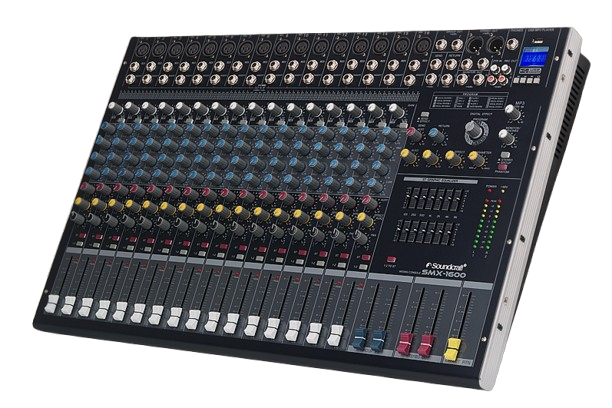Plain Mixers
Compare
Omax 16 Channel Plain Professional Mixer
Potential Applications:
- Live Sound: For mixing multiple microphones and instruments during concerts, gigs, or worship services.
- Studio Recording: Suitable for recording bands, podcasts, or other audio productions where multiple inputs are required.
- Broadcasting: Useful in radio or TV settings where multiple audio sources need to be mixed.
- Theater/Events: Can be used to control sound in events where different microphones or sound sources need to be managed.
KSh38,999.00 KSh45,000.00
Key Features of a 16-Channel Professional Mixer:
- 16 Channels:
- Supports up to 16 individual audio inputs, which could be a combination of XLR inputs for microphones and 1/4″ TRS inputs for instruments or line-level devices.
- Each channel will likely have independent gain control, 3-band EQ (bass, mid, treble), and possibly pan controls (to adjust the stereo positioning of each channel).
- Auxiliary Sends:
- There will likely be auxiliary sends on each channel, allowing you to route specific channel audio to external devices like effects units, monitor mixes, or recording devices.
- These aux sends might be pre- or post-fader, giving flexibility in whether the send signal is affected by the channel fader level.
- Built-in Effects:
- Many professional mixers, even plain ones, come with digital effects like reverb, delay, and echo that can be applied to vocals or instruments. There might be a global control for these effects, as well as per-channel send levels.
- Main Output and Subgroups:
- Expect the mixer to have main stereo outputs (left and right) for sending the mixed audio to speakers or a recording interface.
- Some mixers also have subgroups, allowing you to group certain channels together and control them as a single unit (for example, grouping all drum mics).
- Preamps:
- The quality of the microphone preamps on each channel is crucial. A good mixer will feature low-noise, high-gain preamps that allow for clean, clear audio signals even with low-level microphone inputs.
- Phantom Power:
- The mixer will likely provide phantom power (48V) on the XLR inputs, which is essential for using condenser microphones.
- Routing Flexibility:
- Professional mixers often allow for advanced routing options, such as insert points on certain channels (for connecting external processors like compressors) and direct outs for individual channel recording.
- USB/Recording Capability:
- Some mixers include USB connectivity for recording the stereo mix directly to a computer or even multitrack recording. Check if the Omax model offers this feature, as it can be valuable for capturing live performances or studio sessions.
- Monitor/Headphone Output:
- A dedicated monitor section for headphones or stage monitors, allowing you to listen to specific mixes or the main output.
- Durability and Build Quality:
- Professional mixers tend to be built for durability, with sturdy metal chassis and high-quality faders and knobs that are designed for frequent use in live or studio environments.

- Professional mixers tend to be built for durability, with sturdy metal chassis and high-quality faders and knobs that are designed for frequent use in live or studio environments.


There are no reviews yet.